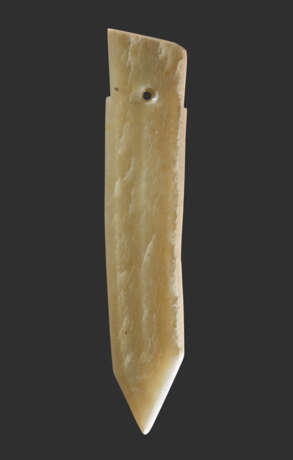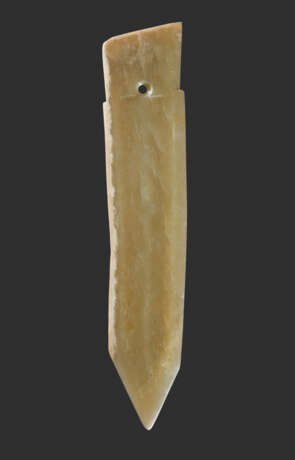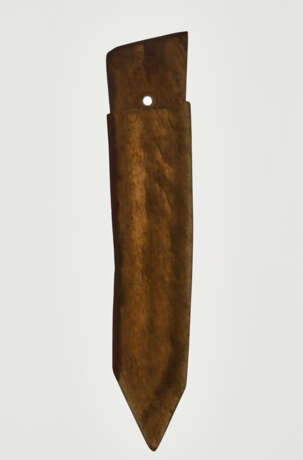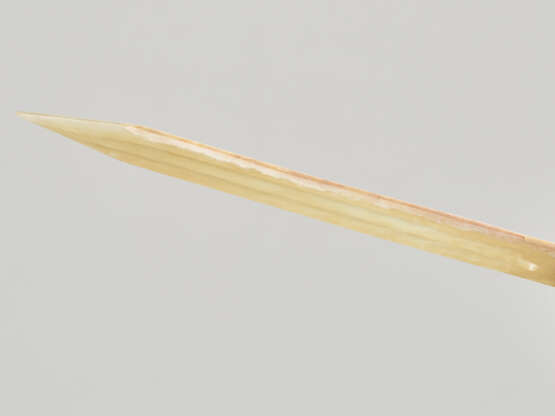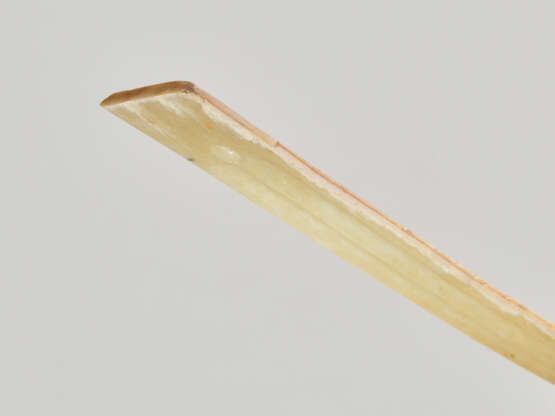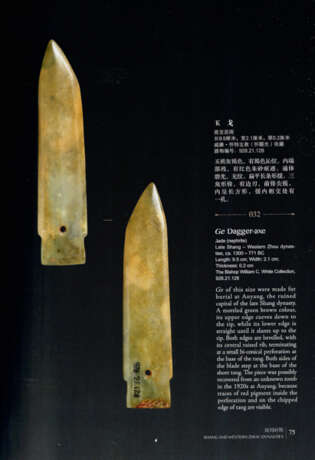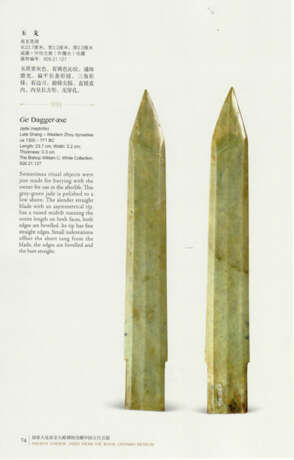ID 7361
Lot 23 | A FINELY CARVED SMALL GE DAGGER-AXE IN YELLOWISH JADE WITH DELICATE GROOVES
Estimate value
€ 5 600
小玉戈 -商代晚期, 公元前13世紀-前12世紀
LENGTH: 13.9 CM
長 13.9 厘米
The ge 戈 , or dagger-axe, is a type of ancient Chinese weapon in metal which made its appearance at the beginning of the Bronze Age (c.2000 BC) and remained in use throughout the Zhou period. Ge are composed of a blade, shaped as a slightly curved dagger, and a tang, which was inserted into a wooden shaft. Jade ge, which were probably for ceremonial use, are faithful replicas of the bronze weapons and come in different sizes: from very large ones- measuring 30 centimetres or more, to smaller ones- such as this lot, down to miniature versions which were probably used as pendants.
This finely carved and thoroughly polished ge of the late Shang period is striking for its lovely colour and the translucency of the glass-like jade. Though carved in one piece, it is clearly divided into two sections: a short, squared tang, drilled with a biconical hole, and a slightly curved blade that terminates in a tapered tip. Two small indentations separate the tang from the blade, with bevelled edges. One side is plain and smooth while the other has a central ridge that separates the two scooped out grooves that run along the blade for almost its entire length.
The highly polished jade is light green and presents striations of white, orange, and black. The white crinkle effect with a few black spots on the plain side of the ge and a white strip along one edge are due to natural alteration of the stone.
Literature comparison/Archaeological sites: Three similar ge blades from the collection of Prof. Max Loehr (1903-1988) were auctioned at Sotheby’s Paris on 15 December 2016, sale no.PF1627, lot 42 (originally published in Chinese Archaic Jades and Bronzes from the Estate of Professor Max Loehr and others, J.J. Lally & Co., New York 1993, no.44). Compare also a small ge dagger-axe from the collection of Samuel and Myrna Myers sold at Sotheby’s New York on 18 March 2014, sale NO9116, lot 143.
Expertise: Prof. Dr. Filippo Salviati
From a Luxembourg collection
盧森堡舊藏
All jades in this catalogue have been professionally examined, authenticated and described by Prof. Fillipo Salviati. Professor Salviati teaches Chinese and Korean art at Sapienza University in Rome, in the Italian Institute of Oriental Studies. He is a world expert on archaic Chinese jades, having released multiple publications and being cited by renowned auction houses such as Sotheby’s.
| Address of auction |
Galerie Zacke Mariahilferstrasse 112 1070 Wien Austria | ||||||||||||||
|---|---|---|---|---|---|---|---|---|---|---|---|---|---|---|---|
| Preview |
| ||||||||||||||
| Phone | +00 4315-320 452 | ||||||||||||||
| Fax | +43-1-5320452-20 | ||||||||||||||
| Buyer Premium | 27.000 | ||||||||||||||
| Conditions of purchase | Conditions of purchase | ||||||||||||||
| Business hours | Business hours
|
